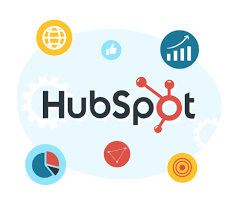Effective marketing is all about streamlining your business processes and optimizing your workflows. That’s where HubSpot comes in – a powerful inbound marketing platform, designed to help you reach more leads, convert more prospects, and streamline your internal processes for better efficiency.
But to make the most of HubSpot, it’s essential to integrate it with your core business processes so that you derive better value out of it. In this article, we’ll take a deep dive into how you can seamlessly integrate HubSpot into your existing workflows, and how you can make the most of its amazing features to achieve your business goals.
1. Define Your Objectives and Goals – The first step to using HubSpot to its full potential is by defining your marketing goals and objectives. Once you have a clear idea of what you want to achieve through HubSpot, you can map out your marketing, sales, and customer service workflows accordingly. This helps in designing tailored campaigns that are in line with your core objectives.
2. Leverage HubSpot Onboarding Integration Features – HubSpot offers a ton of integration options with third-party tools, ranging from CRM software to email marketing apps. By integrating your existing tools with HubSpot, you can streamline your workflows and increase your team’s efficiency. For example, you can easily import your existing contact lists from your CRM into HubSpot or automatically send out emails to your subscribers directly from HubSpot.
3. Use Customized Workflows – Creating customized workflows can help you automate repetitive tasks and save you time. HubSpot offers a drag-and-drop workflow builder that’s easy to use and allows you to create custom workflows for every stage of the buyer’s journey. You can also automate lead scoring, lead nurturing, email marketing, and sales processes to ensure seamless communication with your leads.
4. Collaborate with Other Departments – To ensure the smooth integration of HubSpot, you must ensure that everyone within your organization is fully on board. HubSpot allows for seamless collaboration between sales and marketing, making it easier to align goals, priorities, and strategies. With HubSpot CRM, your sales team can use the same tool as your marketing team, allowing for real-time insights and a unified view of your customer interactions.
5. Measure and Optimize Your Performance – Finally, it’s essential to measure and analyze your performance to continuously optimize your campaigns. HubSpot’s analytics dashboard provides valuable insights into your marketing and sales efforts, helping you to make data-driven decisions. You can review your website traffic, conversion rates, and engagement metrics to gain a comprehensive view of your performance.
Conclusion:
Integrating HubSpot into your business processes can drastically streamline your workflows, saving you time and money while increasing your team’s efficiency. With HubSpot’s powerful features and functionality, you can automate your marketing, sales, and customer service efforts to achieve your business goals more efficiently.
To get started with HubSpot integration, define your goals and objectives, leverage HubSpot’s integration features, create custom workflows, collaborate with other departments, and measure and optimize your performance. By following these steps, you can create a seamless and highly efficient marketing machine that drives results for your business.



